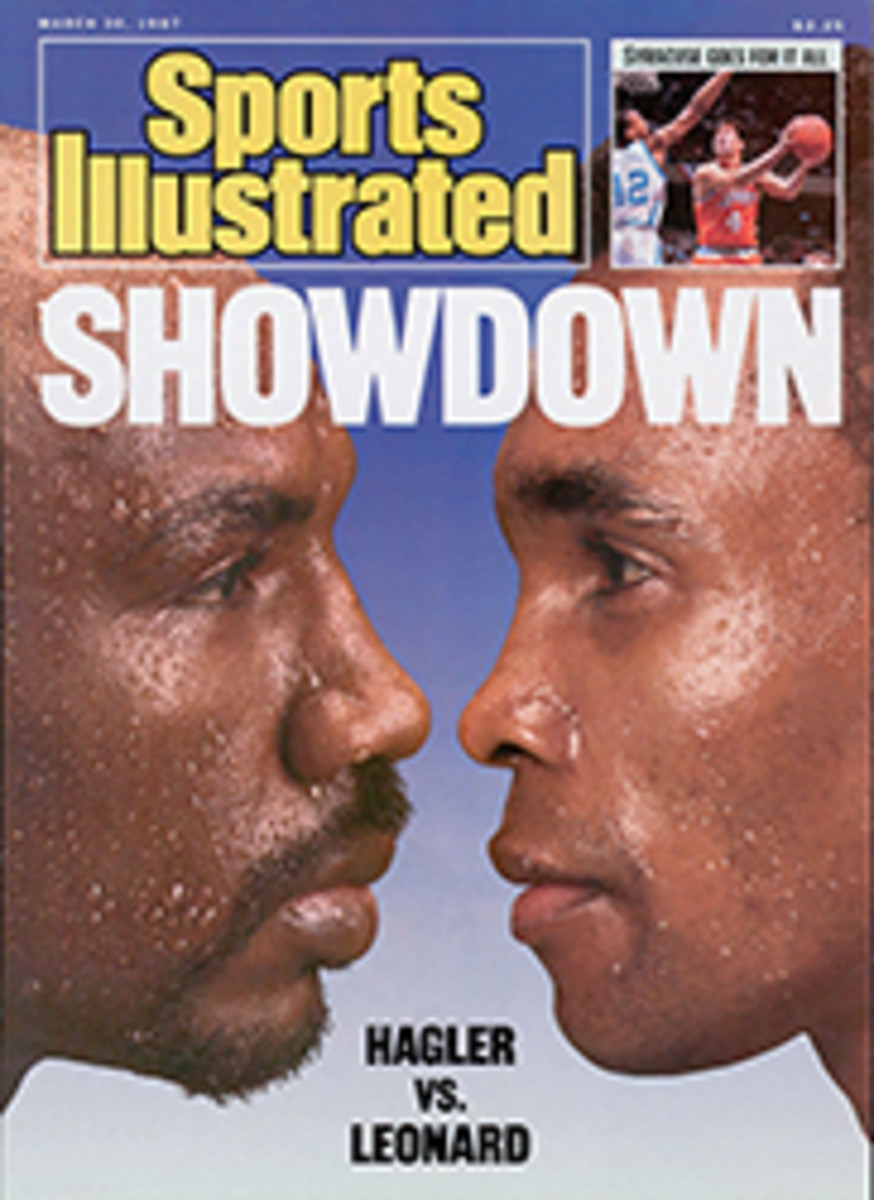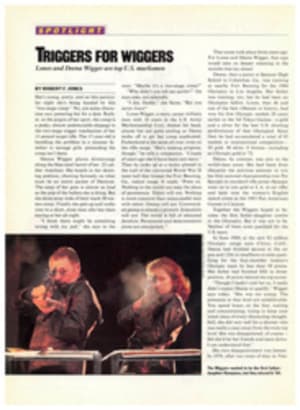
WARNING: 'HOOPS' MAY BE ADDICTIVE
The starting lineups are set at the Astrodome. The Houston Cougars send out Don Chaney, George Reynolds, Ken Spain, Theodis Lee and the Big E, Elvin Hayes. The UCLA Bruins will defend their No. 1 ranking with Lucius Allen and Mike Warren in the backcourt, Lynn Shackelford and Edgar Lacey as the forwards and, of course, Lew Alcindor in the middle. The Game of the Century is about to begin.
But it isn't Jan. 20, 1968, it's 1987. The arena isn't the Astrodome, it's an IBM Personal Computer. And the players are on hand thanks to Hoops, an ingenious basketball simulation game produced by two MIT-trained mathematicians and an Indiana University computer scientist. The statistics and characteristics of 220 of the top college teams from the past, ranging from the 1950 CCNY squad (the only team to win both the NCAA and NIT titles in the same season) to 43 of the best teams from 1986, have been encoded on a floppy disc. The creators plan to add new teams to the program every year.
Hoops is extremely sophisticated yet marvelously easy to play. As coach you decide which team to play, which players to start, when to substitute and what strategy to use. Each player is rated according to his ability to score, play defense, rebound, stay out of foul trouble, handle the ball and draw fouls. A team can play a man-to-man or zone defense with varying intensities: safe (to stay out of foul trouble), tight, or press (to force more turnovers at the risk of fouling more). In a man-to-man you decide who guards whom. On offense you can choose between normal, semistall, stall or hurry-up. To satisfy Rollie Massimino wannabees yearning to rant on the sidelines, strategies may be changed while the game is in progress, the computer equivalent of yelling instructions from the bench. You can replay past NCAA championships and second-guess at will. In the 1977 final would you, like Dean Smith, put your North Carolina Tar Heels into a semistall (Four Corners) in the stretch against Marquette? Would you give Houston forward Larry Micheaux more second-half playing time against N.C. State in the '83 final? Hoops is an armchair coach's paradise.
The game is the brainchild of Jeff Sagarin, 38, and Wayne Winston, 37, two basketball fanatics who also happen to be graduates of MIT. Although Winston had played sports simulation games—involving printed player cards, dice and charts—he never found a basketball game that satisfied him. So, while he was working on a Ph.D. in operations research at Yale, he invented a tabletop dice game. "It was statistically accurate but incredibly boring," Winston remembers. "It took about two and a half hours to play." He shelved the idea until his friend Sagarin, who rates college football and basketball teams by computer for several newspapers, including USA Today, bought a PC in 1985. "Wayne, remember your boring basketball game?" Sagarin asked Winston. "I bet it would be great on a computer." They decided to give it a try.
Winston, now a business school professor at Indiana, supplied the mathematical model, while Sagarin figured out how to adjust raw statistics and strength of schedule so that a team with gaudy stats accumulated against weak opposition—like the '77 UNLV team that averaged 107 points per game—wouldn't be inordinately strong. They enlisted Jim Klopfenstein, then a grad student at Indiana, to translate the formulas into software. Television analyst Billy Packer agreed to supply defensive ratings, augmenting his own expertise with opinions from coaches, players and other experts past and present. The computer did the rest.
What makes an accurate card-and-dice basketball game so dull is the number of times one must roll the dice to make something happen. The Hoops program has the PC generate random numbers—the silicon equivalent of rolling the dice—five times for every :01 of game action. "How would you like to play a board game if you had to roll the dice five times a second?" asks Sagarin. "You'd be in the nuthouse."
You may get there yet, but your affliction will be a Hoops addiction. Klopfenstein's inviting screen display makes the game easy to follow and play. Lines of text describe a running play-by-play, while statistics register on a scoreboard and a self-updating box score. Electronic crib notes remind you what keys to hit to make strategy changes or to call up a box score. Genuine basketball fans will be quickly smitten. Basketball fans used to playing sports strategy games may never be seen again. Hoops is that good.
In that '68 Game of the Century, Elvin Hayes scored 39 points and grabbed 15 rebounds, and Houston had 20 turnovers and UCLA had 16 as the Cougars broke the Bruins' 47-game winning streak with a 71-69 upset. In a recent Hoops replay, Elvin Hayes scored 39 points and grabbed 15 rebounds, and Houston had 20 turnovers and UCLA had 16. Honest to goodness. There are witnesses. Only this time the '68 Bruins, the highest-rated of the 220 teams in the game, won 118-100.
There are only two real flaws in the game, one strategic and the other aesthetic. Players don't get tired, so their effectiveness never diminishes. The creators assure us that this problem is already being rectified, and the revised game will be available soon. (Those who already own Hoops will be offered an upgraded version at a discount.) The other problem is that the play-by-play is not entirely tailored to individuals. When a good rebounder shoots, the program assumes he plays inside and is therefore more likely to have taken an inside shot. The type of an inside shot is randomly chosen. Thus, in a game featuring the '65 Princeton team, for which Bill Bradley averaged 11.8 rebounds per game, you're likely to see BRADLEY DRIVES AND STUFFS. Don't worry, your computer isn't going haywire. Just smile and pretend the shot is a layup.
Yet, considering how ingenious and generally realistic the game is, even the purist roundball maven can forgive the idea of Bradley jamming. True college basketball fans will find Hoops as hard to resist as an open 15-foot jumper.
Hoops sells for $49.95 and may be obtained by writing to Hoops, P.O. Box 310, Bloomington, Ind. 47402, or by calling (812) 336-4886 or (812) 332-0699. It works only on the IBM PC or a compatible machine.
TWO ILLUSTRATIONS
NANCY STAHL

